Navigation
Install the app
How to install the app on iOS
Follow along with the video below to see how to install our site as a web app on your home screen.
Note: This feature may not be available in some browsers.
More options
Style variation
-
Congratulations cowski on being selected by the Eng-Tips community for having the most helpful posts in the forums last week. Way to Go!
You are using an out of date browser. It may not display this or other websites correctly.
You should upgrade or use an alternative browser.
You should upgrade or use an alternative browser.
Baltimore Bridge collapse after ship collision 125
- Thread starter Tomfh
- Start date
- Status
- Not open for further replies.
Paragraph 5, logs? from a prior captain "heavy vibration" were breaking stuff
and it gets worse in Paragraph 6,
... "it should have come as no surprise when circuit breakers to the transformer tripped due to loose and damaged circuitry."
and it gets worse in Paragraph 6,
... "this automation, a safety feature ..., had been recklessly disabled."
-
1
- #482
Further reading of DOJ Complaint leads to the conclusion that excessive vibration was caused by transformer 1, and not the engine. No mention of vibrations affecting transformer 2.
Gotta Love this Custom Off the Floor 'Anti-Vibration' Dampening Rod......
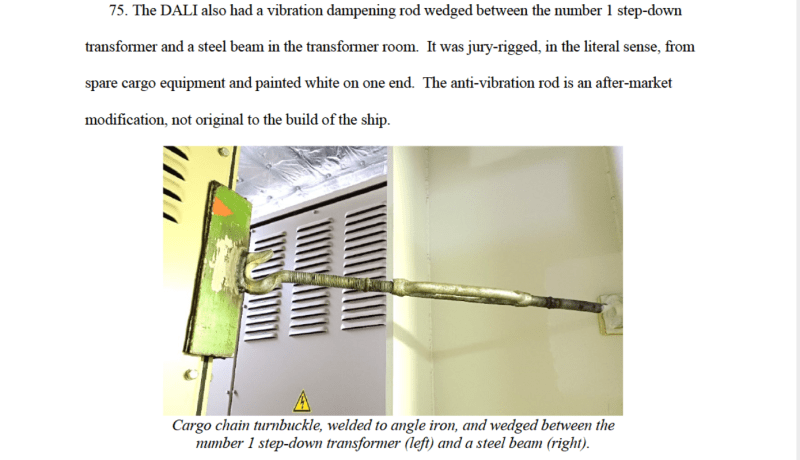
EDIT: This excerpt indicates overall vibrations from engine, but for some reason transformer 1 affected more than 2, or transformer 1 itself had internal vibration issues, or perhaps transformer 1 had more hours of use or exposure to vibrations?
"4. The DALI’s number 1 step-down transformer is a large electrical device that converts high-voltage power produced by the ship’s diesel generators into lower 440-volt power. This transformer and its circuity and breakers had long suffered the effects of heavy vibrations, a well-known cause of transformer and electrical failure. Instead of taking steps to eliminate the source of excessive vibrations, Petitioners jury-rigged their ship. They retrofitted the transformer with anti-vibration braces, one of which had cracked over time, had been repaired with welds, and had cracked again. And they also wedged a metal cargo hook between the transformer and a nearby steel beam, in a makeshift attempt to limit vibration."
"5. These telltale signs of vibration problems were not isolated. The ship’s previous chief officer reported that “constant vibrations” above the engine room were shaking loose the ship’s cargo lashings. Engineers noted that these problems were cracking equipment in the engine room. A prior captain wrote that “heavy vibration” at certain speeds had been reported to Synergy, the technical manager of the vessel. Accordingly, it should have come as no surprise when the circuit breakers to the transformer tripped due to loose and damaged circuitry."
Gotta Love this Custom Off the Floor 'Anti-Vibration' Dampening Rod......

EDIT: This excerpt indicates overall vibrations from engine, but for some reason transformer 1 affected more than 2, or transformer 1 itself had internal vibration issues, or perhaps transformer 1 had more hours of use or exposure to vibrations?
"4. The DALI’s number 1 step-down transformer is a large electrical device that converts high-voltage power produced by the ship’s diesel generators into lower 440-volt power. This transformer and its circuity and breakers had long suffered the effects of heavy vibrations, a well-known cause of transformer and electrical failure. Instead of taking steps to eliminate the source of excessive vibrations, Petitioners jury-rigged their ship. They retrofitted the transformer with anti-vibration braces, one of which had cracked over time, had been repaired with welds, and had cracked again. And they also wedged a metal cargo hook between the transformer and a nearby steel beam, in a makeshift attempt to limit vibration."
"5. These telltale signs of vibration problems were not isolated. The ship’s previous chief officer reported that “constant vibrations” above the engine room were shaking loose the ship’s cargo lashings. Engineers noted that these problems were cracking equipment in the engine room. A prior captain wrote that “heavy vibration
-
1
- #484
3rd attempt at posting pdf of lawsuit......
-
1
- #485
The following statement leads me to believe that engine vibrations were creating a resonant condition with some of the hull structure.
This vibration could create cracks in the hull structure.
It is not unheard of for equipment to have forbidden operating speeds, but managing this shipboard, I can not see passing quickly through the forbidden operating zone in a ship propulsion situation.Case 1:24-cv-00941-JKB Document 82 Filed 09/18/24 Page 16 of 53 said:
This vibration could create cracks in the hull structure.
TugboatEng
Marine/Ocean
Slow speed diesel engines don't have counterweights. This does cause significant vibration in the ship a high speeds. Modern engines installations have an attenuator that generates destructive interference. I was a steam intern and do high speed diesel now so I can't tell you what it's called. Maybe I'll remember.
JohnRBaker
Mechanical
Tug, is this what you had in mind:
John R. Baker, P.E. (ret)
Irvine, CA
Siemens PLM:
The secret of life is not finding someone to live with
It's finding someone you can't live without
John R. Baker, P.E. (ret)
Irvine, CA
Siemens PLM:
The secret of life is not finding someone to live with
It's finding someone you can't live without
Richard Baum
Electrical
Large diesel engines and large steam turbines can have critical speeds that they should not be operated at for an extended period because of the vibration caused. When an engine has a damaging critical speed or speeds the information is displayed near the controls so the operator does not allow the engine to remain at that speed.
Here is a good basic explanation and simulation of how a large 2-cycle Marine Heavy Oil Engine operates. Vastly different than your typical 2-cycle leaf blower or motorcycle engine.
e.g. Shows what a Cross-Head is and does, and why it is required on large 2-cycle engines.
Lots of massive moving parts and wear items to change vibrational characteristics as the hours increase.
Typical operating range of up to only 100 RPM engines, due to large bore and very long stroke.
Then there are driveshaft and propeller vibrations, and the coupling of all propulsion subsystems, hull/ship interactions and changes over time.
e.g. Shows what a Cross-Head is and does, and why it is required on large 2-cycle engines.
Lots of massive moving parts and wear items to change vibrational characteristics as the hours increase.
Typical operating range of up to only 100 RPM engines, due to large bore and very long stroke.
Then there are driveshaft and propeller vibrations, and the coupling of all propulsion subsystems, hull/ship interactions and changes over time.
-
1
- #490
Sal takes issue with some of the claims of the lawsuit.
[link ]Dali Sets Sail | NTSB Finds Loose Wires | US Sues Owner | Ship to be Repaired in China; What is Going on With Shipping?[/url]
This video described the process required to reverse a slow speed marine main engine.
NTSB Docket updated with electrical investigation report.
NTSB Docket
[link ]Dali Sets Sail | NTSB Finds Loose Wires | US Sues Owner | Ship to be Repaired in China; What is Going on With Shipping?[/url]
This video described the process required to reverse a slow speed marine main engine.
NTSB Docket updated with electrical investigation report.
NTSB Docket
TugboatEng
Marine/Ocean
I finally found the right terms to search. The device I was referring to is a vibration compensator.
From Tug's link:
So far I don't see anything in NTSB's reports about testing of ship vibrations, except mentioning they would be tested. The fact that Dali was allowed to set sail for China's Ship Yard, indicates criminal investigation/process may have ended? Typically all evidence, the ship, would have documented chain of custody and would be held during criminal process.
The filed lawsuit appears to be Civil seeking damages only? I have been involved in litigation where the initial Complaint filed with a court, has Wild Allegations contained within. However once under oath, the plaintiff provides totally different testimony/story.
Komeco said:has had lots of advanced technologies in measuring and reducing
troublesome ship vibrations since 1995.
• Electric type vibration compensator has been developed to compensate ship
troublesome ship vibration induced by marine propulsion system.
• Vibration compensator can be installed directly on the main engine, hull and near to
propeller.
• KOMECO has three patents on vibration compensator.
(PATENT NUMBER : 10-1089557, 10-1105209, 10-1202679)
So far I don't see anything in NTSB's reports about testing of ship vibrations, except mentioning they would be tested. The fact that Dali was allowed to set sail for China's Ship Yard, indicates criminal investigation/process may have ended? Typically all evidence, the ship, would have documented chain of custody and would be held during criminal process.
The filed lawsuit appears to be Civil seeking damages only? I have been involved in litigation where the initial Complaint filed with a court, has Wild Allegations contained within. However once under oath, the plaintiff provides totally different testimony/story.
A smaller vibration compensator, they work similar to noise canceling headphones.
A PR Video showing the G&O Compensators, this looks like a useful thing, with possibly wider application than just ships.
A PR Video showing the G&O Compensators, this looks like a useful thing, with possibly wider application than just ships.
Maersk Saltoro was built in 2015 according to vesselfinder. Dali sea trials were completed Dec 2014, and Dali was delivered to customer 2-3 months later. Wonder if Court is going to evaluate this ship, and compare it's condition to the Dali? Assuming both ships are built by Hyundai and comparable?
And the answer is:
Edit: According to vessel finder, these are the similar ships to Maersk Saltoro, with Dali being one of those. Looks like 4 of them are flying Singapore Flag.
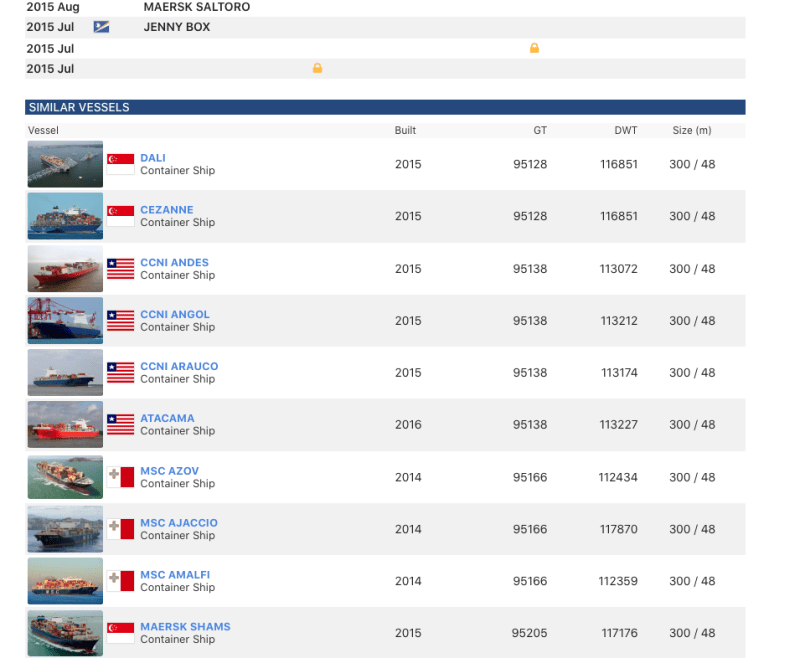
And the answer is:
MPR NEWS said:Like the Dali, the Singapore-flagged Saltoro was built by Hyundai in 2015.
Edit: According to vessel finder, these are the similar ships to Maersk Saltoro, with Dali being one of those. Looks like 4 of them are flying Singapore Flag.

TugboatEng
Marine/Ocean
I have a friend that was involved with the sea trial of a new build ship. My understanding is that the ship was restricted from operating at full power without the compensator functioning.
Information from Synergy Marine Group's Web Site; Dali's and Maersk Saltoro's Ship Management Company, per attached 2023 Brochure and web site link.
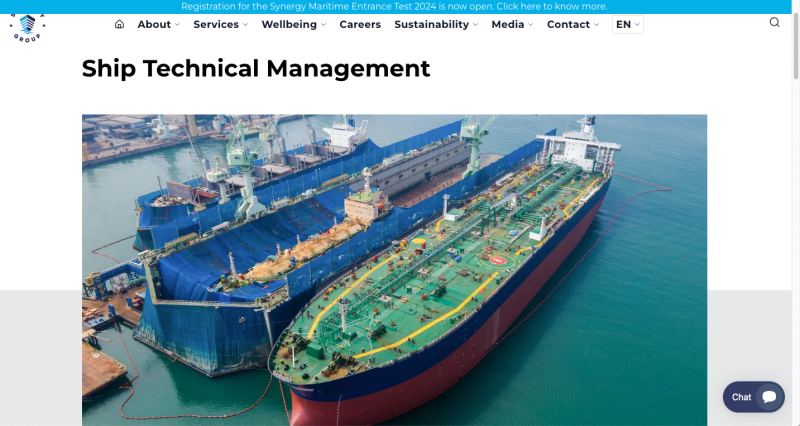
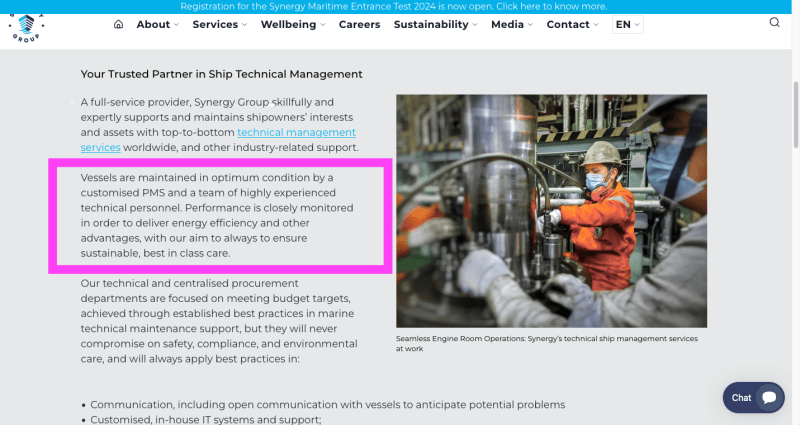
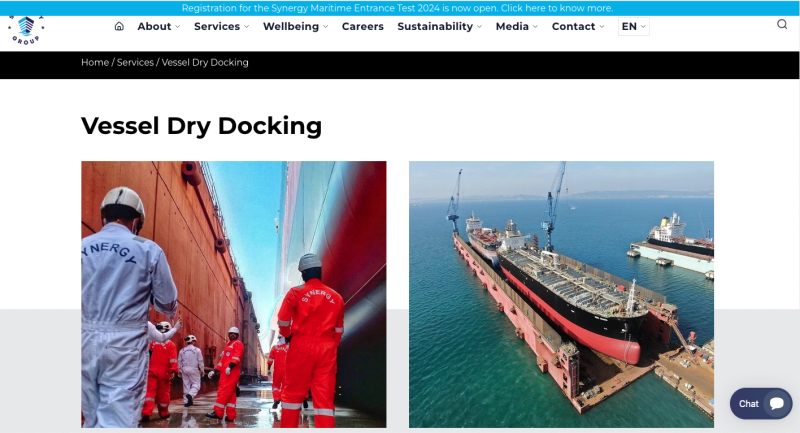
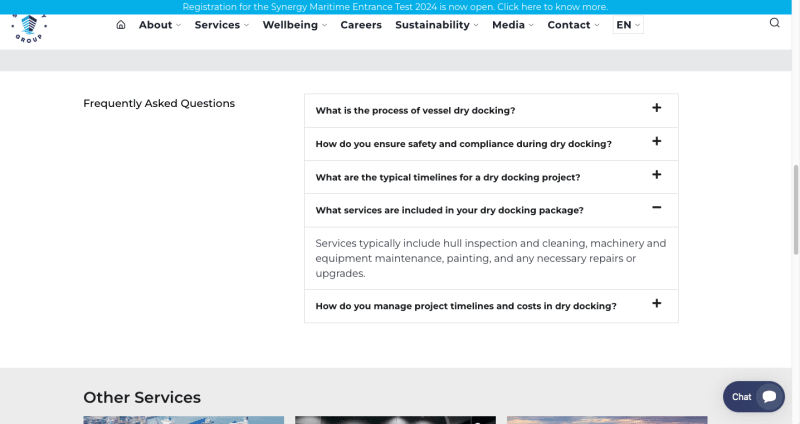
Synergy Group said:A Full-Service Provider with End-to-end Maritime Solutions.....
Synergy Marine Group said:Vessel's are maintained in optimum conditon........




Nukeman948
Electrical
Could you post a link that mentions these sea trials?
Was it completed 3 months after the sea trials because it failed...?
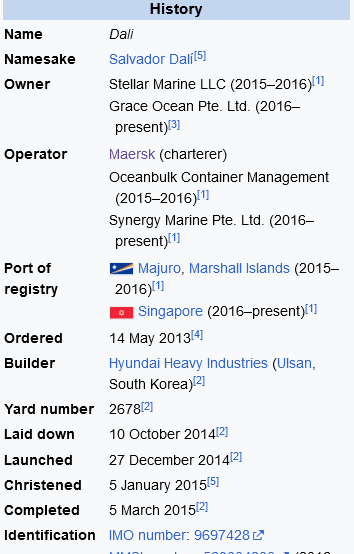
I have no detailed information on sea trials or possible problems identified at sea trials, and I no longer have any idea what article I read, months ago, stating that information.
Perhaps if you google it, you can find the answer
My point was only showing it appears the Dali Container Ship and Maersk Saltoro were both originally completed in 2015, at the same ship yard, and have similar specifications and serial numbers. Thus perhaps sister ships.
Perhaps FBI raided Saltoro, because they had insight that it was in a bad state of maintenance or the opposite? I noticed on vessel tracker than another Singapore Flagged sister ship left the US Baltimore Port about 10 days ago? I have not seen anything about it being boarded?
Perhaps if you google it, you can find the answer
My point was only showing it appears the Dali Container Ship and Maersk Saltoro were both originally completed in 2015, at the same ship yard, and have similar specifications and serial numbers. Thus perhaps sister ships.
Perhaps FBI raided Saltoro, because they had insight that it was in a bad state of maintenance or the opposite? I noticed on vessel tracker than another Singapore Flagged sister ship left the US Baltimore Port about 10 days ago? I have not seen anything about it being boarded?
Nukeman948
Electrical

You had made the claim that the Dali was delivered, finished, and sea trials completed all in Dec. 2014. I'm glad we now agree that it was actually 2015.
You made the claim that sea trials happened in Dec 2014 so it is your responsibility to prove it, not mine. I did search when you posted that because I knew the date had to be wrong and found nothing at all except for what you said here, that's why I asked.
It appears that the first two sister ships ordered were the Cezanne, IMO 9697416 built Jan 2015, and Dali IMO9697428 built Mar 2015 are much closer to each other than the Saltoro, IMO 9725706 Aug 2015 and Dali. I would consider the Saltoro a step sister or cousin maybe.
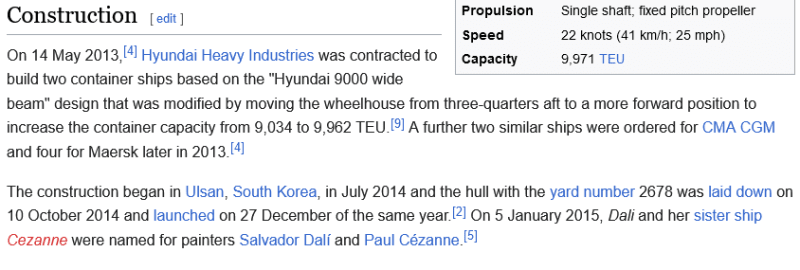
The only people that would call "executing a search warrant" a "raid" would be criminals.
- Status
- Not open for further replies.
Similar threads
- Replies
- 13
- Views
- 13K
- Question
- Replies
- 39
- Views
- 21K
- Replies
- 17
- Views
- 11K
- Replies
- 25
- Views
- 23K
- Replies
- 33
- Views
- 3K

